Brazil is South America’s largest country and the only one with Portuguese as its primary language. The majority of the Amazon Rainforest lies in Brazil, yet this vast country also has an extensive coastline with many of the main cities in Brazil sitting on the South Atlantic.
The Portuguese first arrived here early in the 16th century, and their time in the country has left many reminders of colonialism. Brazil gained true independence in 1822, and today it comprises 26 provinces within five regions. The national population of almost 220 million makes it the seventh most populous in the world. Sao Paulo, with over 11 million, is the largest city in Brazil, while the former capital, Rio de Janeiro, with half that number, is the city that attracts the most tourism. The Government decided to create a new city, Brasilia, in the interior as the new capital.
Brazil’s diversity and multiculturalism are just two reasons to visit. Catholicism is important and while “Carnival” is celebrated around the world each year, few do it, as well as Brazil. Add the country’s passion for soccer, the riches of the Amazon and the Pantanal, and you have a country that should be on every traveller’s list. Read on, and you will learn more about the best cities in Brazil.
Contents
Cities in Brazil
Brazil Cities – North
This is the largest of the five regions, comprising seven provinces and is virtually all Amazonian Rainforest with sparse population density.
Much of it is remote, with limited highways and transport by air or boat.
You might be surprised to discover that major cities in Brazil have been built within the Amazon yet here are three that have developed into sizeable settlements.
1- Manaus
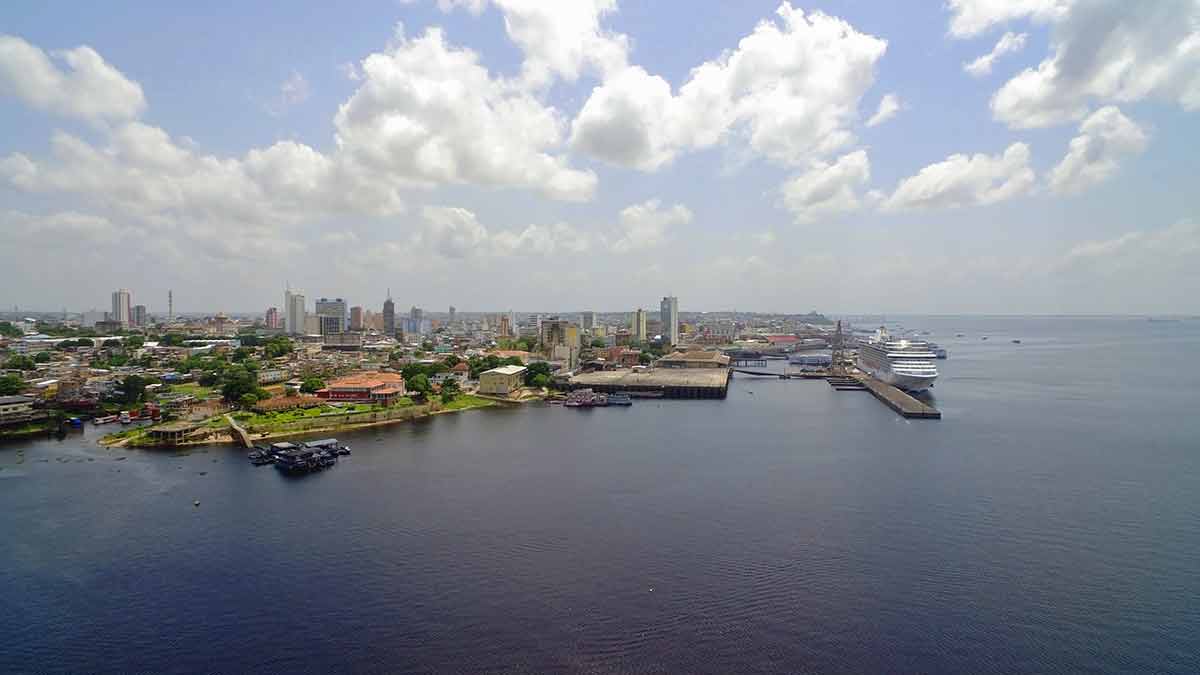
Manaus, with a population more than two million, sits where the Negro and Solimoes Rivers meet before they join the Amazon itself.
It takes the name of the indigenous tribe living in this region when the Portuguese first arrived, the Manaos.
It is in the heart of the Amazon Rainforest so it is both the stepping point for exploring but also the city where trade relating to the forest is centred; timber, rubber, nuts and rosewood oil.
Rubber was the product that really led to its growth late in the 19th century.
In the city you will find a variety of indigenous and regional museums, gardens, an opera house and a cathedral.
Top tour: Brazil Manaus Indian Village and Meeting of the Waters Tour.
2- Belem
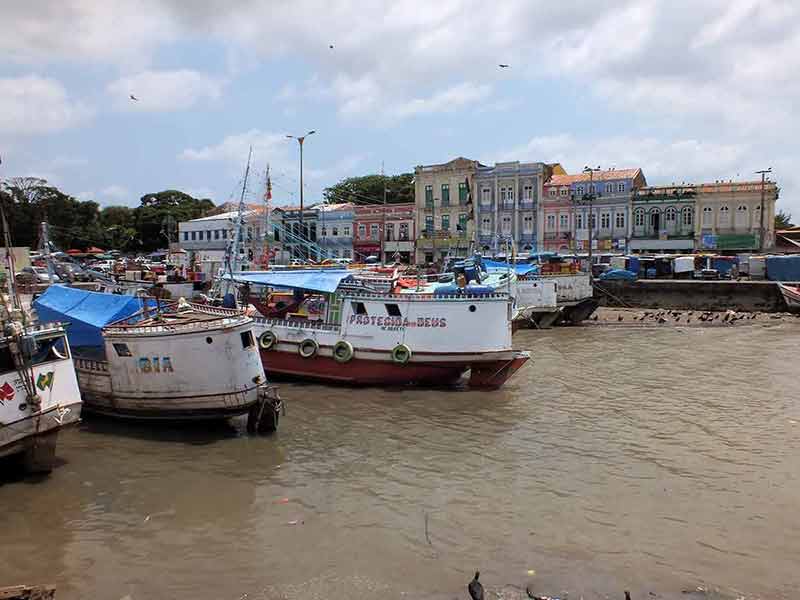
Belem is a port city 100 kilometres (62.5 miles) upriver from the Atlantic.
It is the capital of Para Province with a population approaching 1.5 million and almost as many again living in the greater metropolitan area.
It was the first colony established on the Amazon by the Portuguese in 1616.
Part of the city still has plenty of reminders of colonial times, but the more modern part has several skyscrapers.
Mango trees abound in the older parts and those early days gave it its name, Santa Maria de Belem in Lisbon, which itself is regularly shortened to Belem.
3- Porto Velho
The third city in the North worth considering is Porto Velho in the Upper Amazon Basin.
Its growth to a population above half a million is partly due to the mining of cassiterite which was discovered a century ago.
That led to the construction of a railroad and increased trading activity from a base of just 1,000 inhabitants. Cassiterite remains the most important source of tin today.
Workers came from the Caribbean, mostly Barbados resulting in a large neighbourhood being nicknamed “Bajan Hill.”
Cities in Brazil – North East
This is a coastal region of nine provinces and where the Portuguese first landed.
Brazil’s first capital, Salvador, is here with highway communications along the extensive coast reasonably good.
However, the northeast remains a relatively poor region of Brazil.
Its lovely beaches alone are a reason to head to this part of Brazil. In addition, the architecture relating to the time when the Portuguese dominated the region remains impressive.
4- Salvador
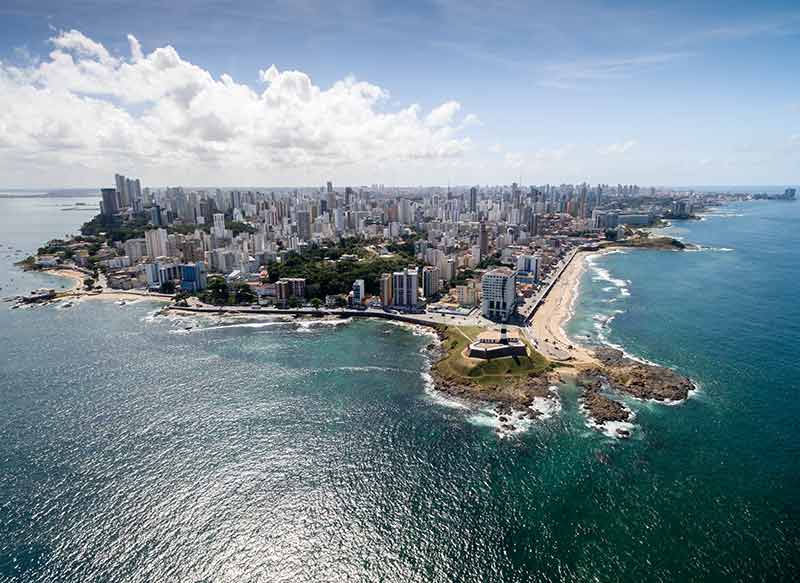
Salvador in Bahai State is famed for its cuisine and music, a planned port city founded in the mid-16th century and Brazil’s first capital city.
Many Africans came here to work, hence Salvador being the centre of Afro-Brazilian culture.
Colonial architecture is a serious reason for travellers visiting this city; UNESCO recognised its value, making it a World Heritage Site in 1985.
Its Carnival is the biggest in the world according to the Guinness World Records.
Its population is just short of three million, with a further one million living in the immediate vicinity.
Top tour: Private City Tour in Salvador.
5- Fortaleza
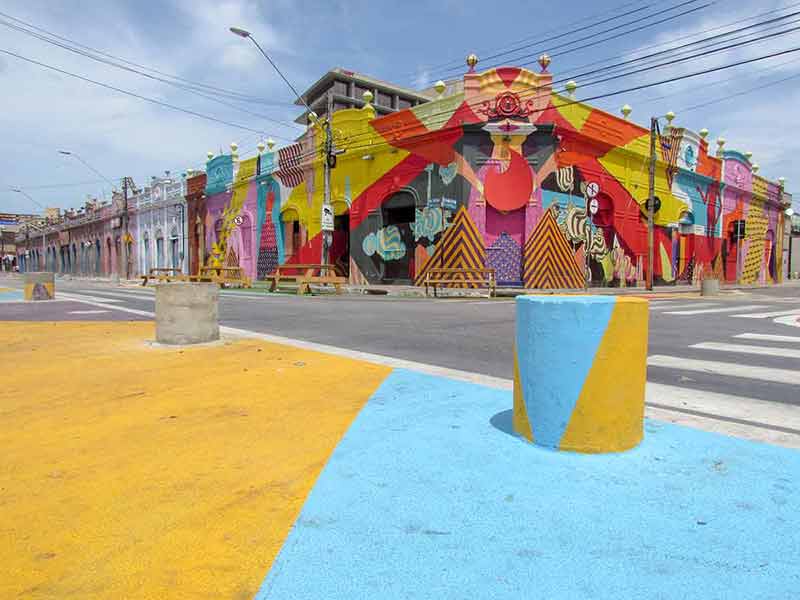
Fortaleza is almost as big as Salvador in population terms; 2.7 million, with half as many again in the greater metropolitan region.
Its location makes it the closest Brazilian city to Europe, hence its importance as a trading port.
The Portuguese founded a settlement here in 1603, building a fort and naming it Nova Lisboa (New Lisbon).
After the Portuguese defeated the French a decade later, the settlement began to expand.
The Atlantic is just north of the city, with other towns to its south and west.
Top tour: 3 Beaches in 1 Day Tour Leaving Fortaleza.
6- Recife
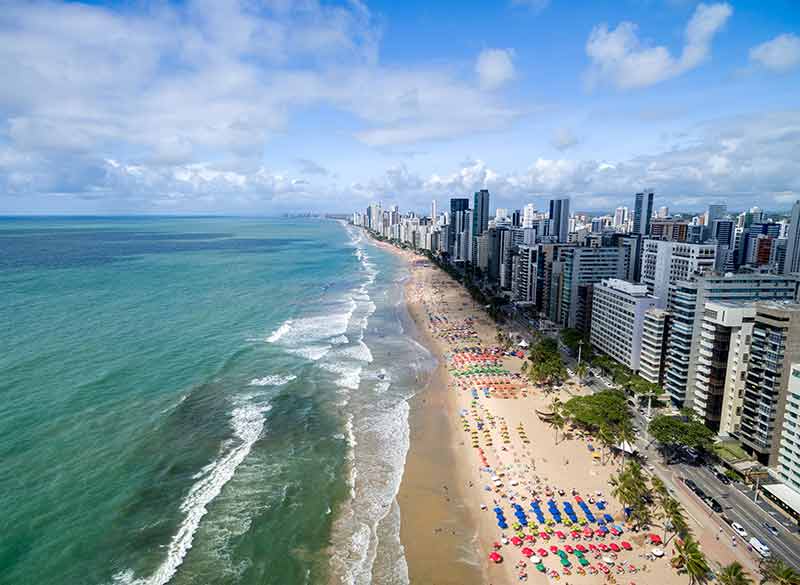
Recife was one of the early settlements in northeast Brazil, way back in 1537.
Today’s population exceeds 1.6 million, with the total urban area having over four million.
Sugar cane was central to Recife’s economy through its growth, developed by the Dutch West India Company initially.
Its rivers and islands earned it the nickname “Brazilian Venice.”
In recent decades, industries such as vehicles, ships, and electronics have developed.
More recently, medical and educational activities have grown enormously. The beaches and historical sites attract significant numbers of tourists.
Top tour: Half-Day Museum Tour in Recife.
7- Sao Luis
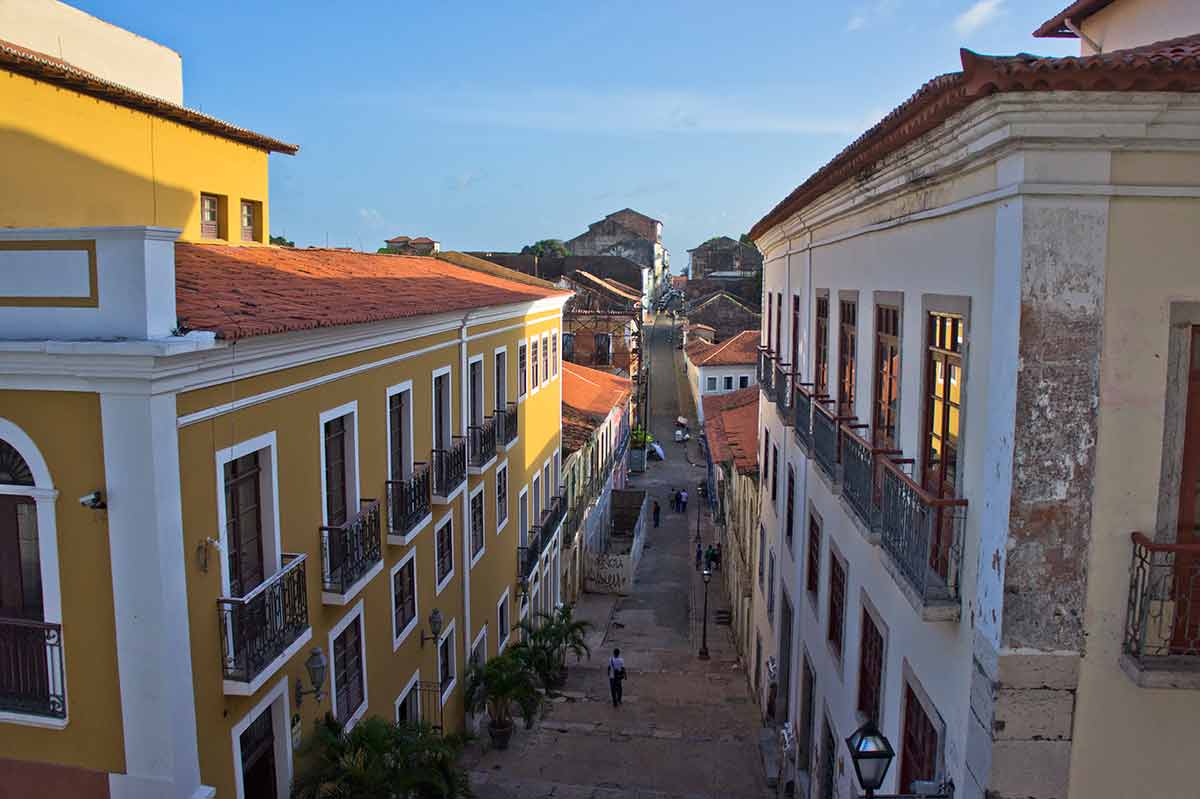
The French founded São Luís on Upaon-acu Island and Ilha de São Luís and today has a population of just over a million.
UNESCO made its original heart a World Heritage Site in 1997.
The highlights for tourists lie in Praia Grande, where there are two palaces, the Palace of the Lions, where the State Governor lives has lovely French art and furniture, and the 17th century La Ravardière Palace.
The city has two ports with the export of iron ore as their primary activity.
Metallurgical industries are essential to the economy.
Top tour: Sao Luis Route of Emotions.
8- Maceio
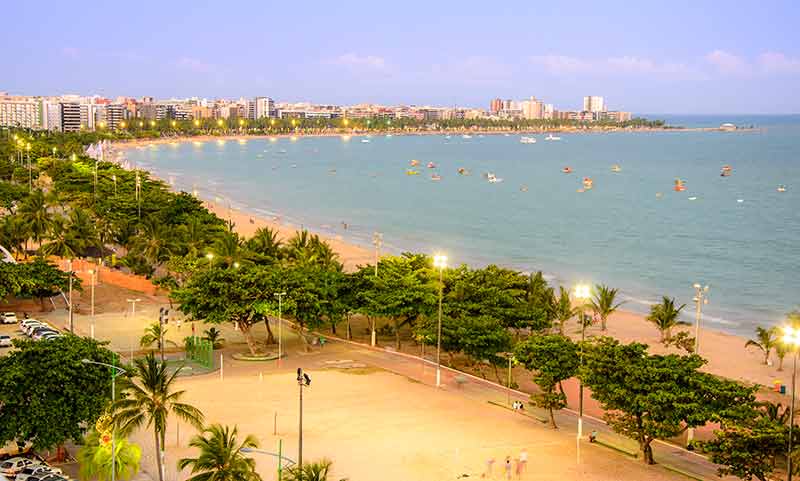
“Maceió” is an Indigenous word for a spring and you will find that there are many flowing into the ocean here if you pay a visit.
Settlement began early in the 19th Century with sugar, tobacco and cotton plantations established, with the products then being exported to Europe.
Trade in leather, spices and coconut also helped in its growth.
Colonial houses in pastel colours still stand in its heart, while other attractions are the 19th-century Cathedral and the Théo Brandão Museum of Anthropology and Folklore in a renovated seafront mansion.
An offshore reef means that its lovely white sandy beaches are a delight. Check out this tour.
Cities in Brazil – Central West
The Federal District of Brasilia and three provinces make up the Central West Region, where transport once again the air and using the country’s rivers.
There is very limited industrialisation, with agriculture an important aspect of the area.
9- Brasilia
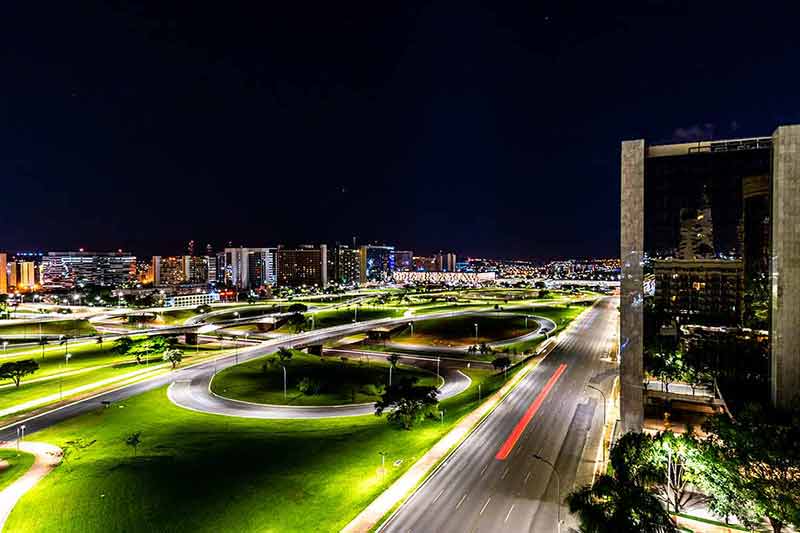
In 1960, Brasilia in the Brazilian Highlands became the national capital, taking over from Rio de Janeiro, which had been the capital since 1763.
It is a planned city whose modern architecture earned it UNESCO World Heritage status in 1987 and “City of Design” in 2017.
Today’s population is around 2.5 million, and Brasilia has domestic flight connections throughout the country.
Its construction finally implemented plans that had been discussed for decades.
Not surprisingly, much of its economic activity is based on its status as capital, Brasilia being the 3rd highest GDP in Brazil.
Find out more about Brasilia on a city tour.
10- Goiania
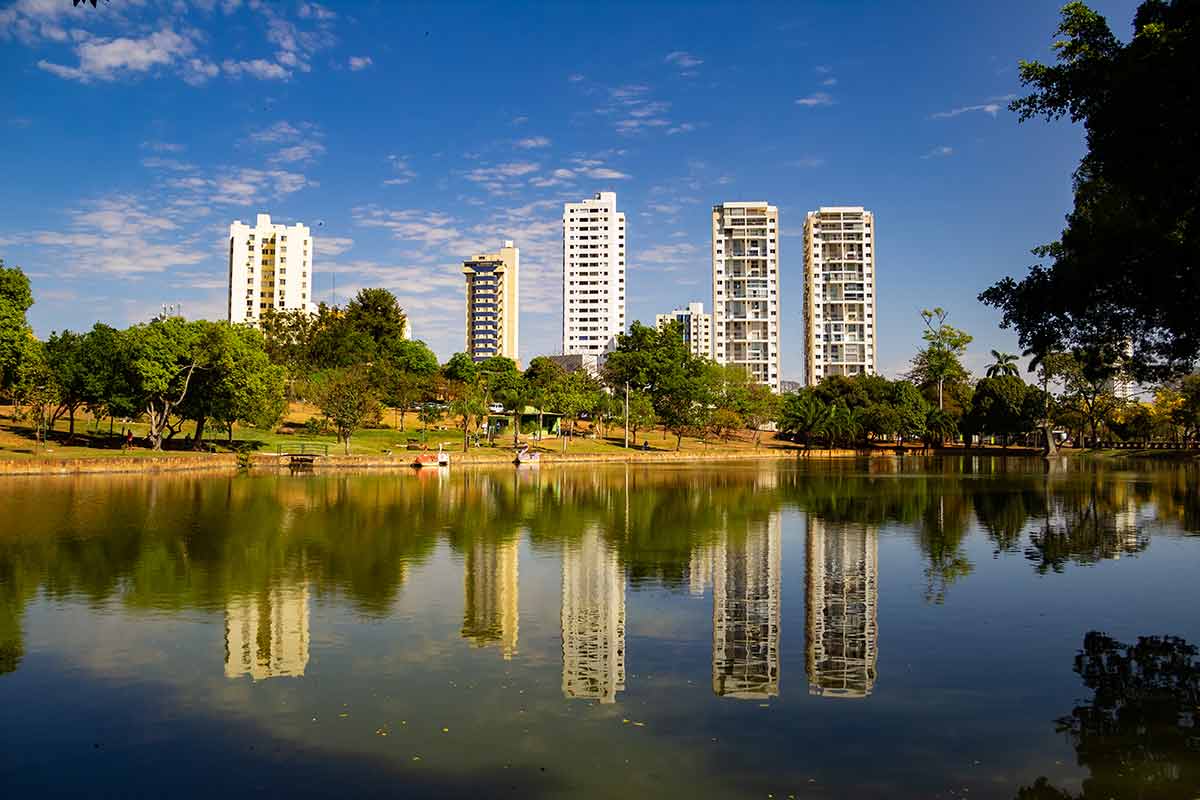
Goiânia is another planned city. Its population is 1.5 million, with a further million living within the immediate vicinity.
It was built in the 1930s to serve as the capital of Goias Province.
It is located 200 kilometres (125 miles) from Brasilia. Its economy involves industry and agriculture, medicine and fashion.
Green areas for which it was famous are gradually disappearing and the city grows with debate about green areas per capita under constant discussion.
11- Campo Grande
Campo Grande is the largest city in the Mato Grosso do Sul, a city whose nickname, Cidade Morena (“Swarthy City”), is a result of the reddish-brown colour of its soil.
Today’s population of 906,092 is an increase of over three-quarters of a million in half a century.
The city is truly cosmopolitan, with immigrants arriving from the Middle East, Japan and Europe to join the local indigenous peoples and some from Brazil’s neighbours.
The result is an interesting culture that visitors are sure to enjoy.
Top tour: Pantanal Day Trip.
12- Cuiaba
Cuiabá is the gateway to the Pantanal, a truly rich wildlife region to rival anything in South America, founded early in the 18th century when gold was discovered.
It is a city of around half a million in a region known for its livestock and agriculture.
This fast-growing city is the capital of Mato Grosso and has been for two centuries, with its population a mix of European, African and local indigenous peoples.
Travellers will find a city rich in music and dance and known for its distinctive cuisine.
Top tour: 8-Day Jaguars and Pantanal Safari.
Cities in Brazil – South
The four provinces of the South are the economic hub of Brazil, responsible for around 50% of Brazil’s GDP.
This is comfortably the region with the most population; 80 million or so.
Sao Paulo and Rio de Janeiro are both cities and provinces, with the two also the dominant ones when it comes to one of Brazil’s real passions, soccer.
Brazil has won the World Cup 5 times, more than any other country.
13- Sao Paulo
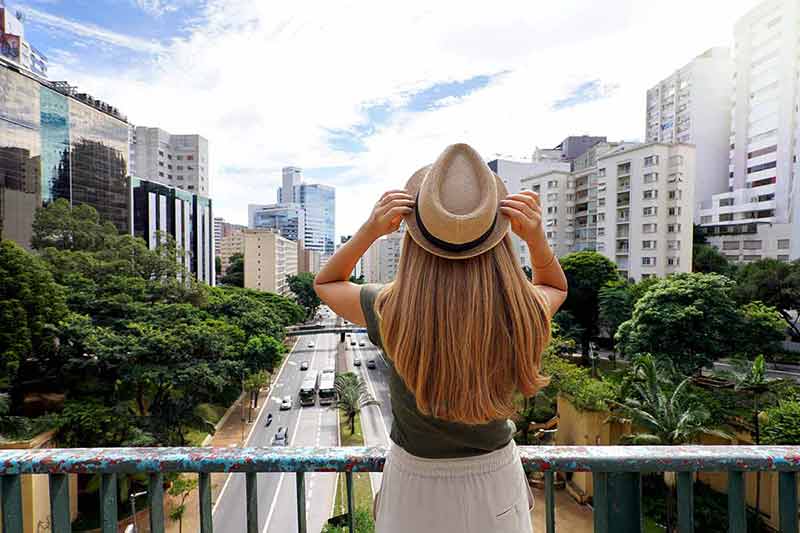
Brazil’s largest city with its GDP is is Latin America’s biggest city.
In the greater metropolitan area, there are over 30 million people.
Not surprisingly, it is important when it comes to commerce and industry as well as being a centre for entertainment and the arts.
There is much to see and do in a city of monuments, parks and museums.
The annual calendar of events means there is bound to be something happening when you visit.
Perhaps the annual Jazz Festival, the Brazilian Grand Prix, the Fashion Week or the ATP Brazil Open?
If any of these events appeal to you, check on the respective dates when planning a trip.
Top tour: São Paulo’s Full Day City Tour: Main City Sights in 7 Hours.
14- Rio de Janeiro
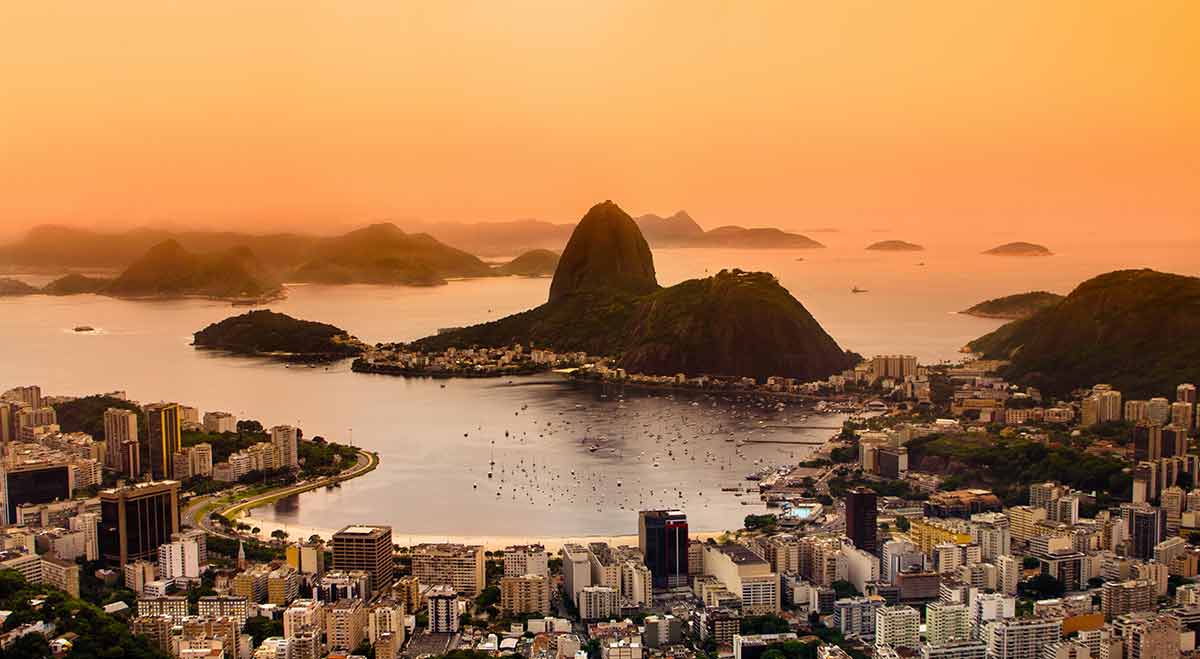
Mention Rio and your mind is likely to wander to its lovely beaches, Sugarloaf Mountain and Christ the Redeemer (Corcovado).
Few cities in the Southern Hemisphere attract as many tourists annually as Rio de Janeiro.
Photographs of the city from the air are stunning and those views are available to anyone taking the cable car up to the summit of Sugarloaf Mountain.
Carnival, the samba and the bosa nova are further reasons to put Rio on your “must see” list.
While there, all soccer fans should visit the Maracana Stadium, where many famous soccer games have taken place, including two World Cup Finals, in 1950 and 2014.
Top tour: Full Day in Rio: Christ the Redeemer, Sugarloaf, Maracana and Selaron with Lunch.
15- Belo Horizonte
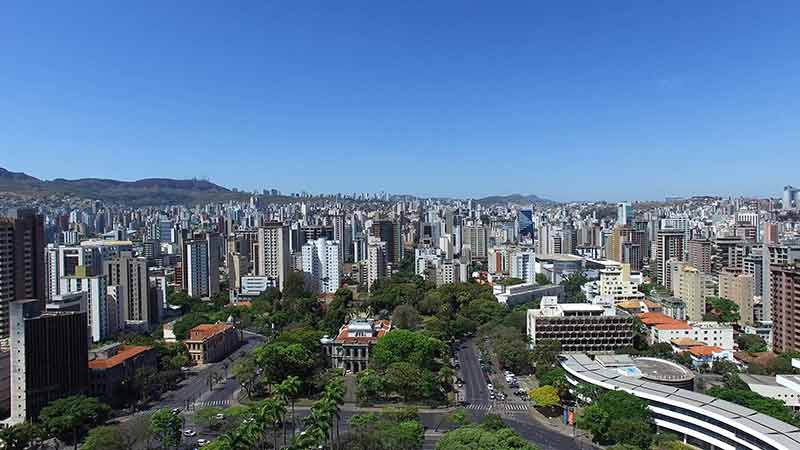
Belo Horizonte (‘Beautiful Horizon’) is a city of 2.7 million with more than double that amount living in the immediate vicinity.
The capital of Minas Gerais, Brazil’s first planned city, was built on several hills surrounded by mountains.
The first settlement dates from the 18th century with the city you see today planned late in the 19th.
There are many large parks in the area with plenty of forested areas as well.
The Jambeiro Woods (Mata do Jambeiro) is a large nature reserve with over 100 species of birds inhabiting it and 10 species of mammals.
Top tour: Discover Belo Horizonte City.
16- Guarulhos
This city is within the greater metropolitan area of Sao Paulo, with its own population exceeding a million.
The name is from the local indigenous Tupi word translated into “Eaters”, or “big-bellied people”, referring to the region’s original inhabitants.
The first colonial settlement here was established in the middle of the 16th Century by Jesuit priests.
At that time, a few small villages were regularly threatened by other indigenous tribes.
17- Campinas
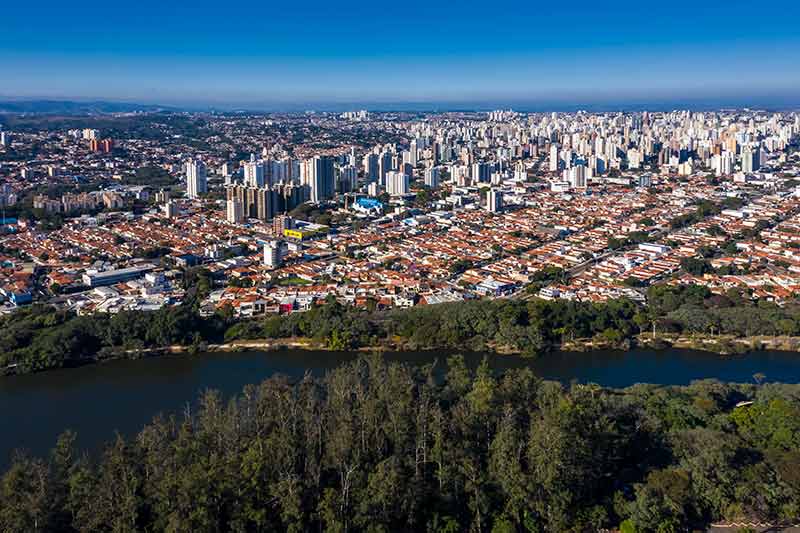
Likewise, Campinas is within “Greater Sao Paulo” and has a population exceeding a million.
The name means “grass fields” which aptly described the area that was once dense subtropical forest with several rivers and rolling hills.
It was founded in 1774 but yellow fever struck, killing a large percentage of the population during the 1800s.
Coffee, cotton and sugar cane were central to the economy with coffee being the main reason for its prosperity.
Its infrastructure quickly developed with theatres, opera houses, newspapers established, together with good educational and medical facilities.
18- Sao Concalo
São Gonçalo is a city of over a million within the greater metropolitan area of Rio de Janeiro.
Its industrial contribution to the Rio State GDP is important.
Part of the city lies within the Central Rio de Janeiro Atlantic Forest Mosaic created this century aiming to improve conservation locally.
Sao Concalo’s population has increased by 200,000 this century alone, an indication of the opportunities the city provides for employment.
Cities in Brazil – South East
The three provinces of the South East have a relatively good standard of living.
Urbanisation is relatively recent with a significant number of Brazilians of European descent in the largest cities.
19- Curitiba
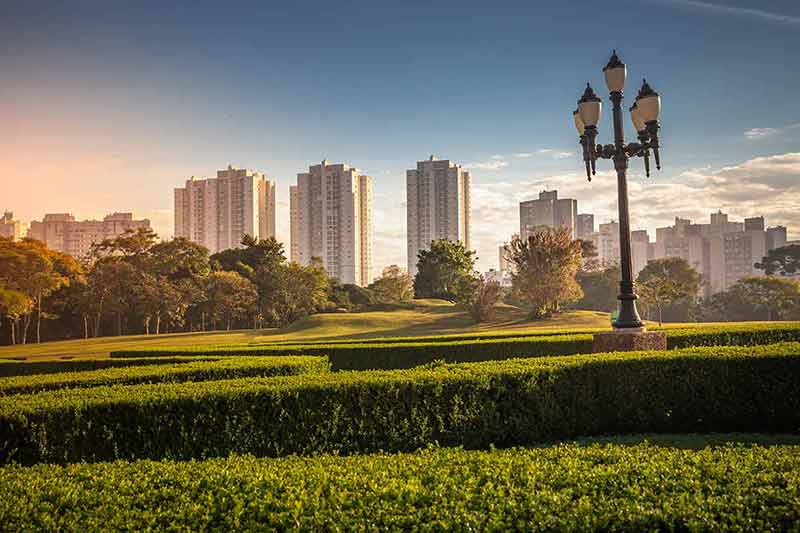
Curitiba is capital of the Parana Province and has a population approaching two million.
It is found on a plateau, 932 metres (over 3,000 feet) above sea level.
In its early days, the 18th Century, its role was to link the livestock industry with its market.
Subsequently, its growth continued because of logging, then coffee and agricultural production.
It remains a prosperous city, with around half of the inhabitants arriving from elsewhere.
Reader’s Digest named it the top “Brazilian Big City” for living and has few problems in attracting investment, yet its unemployment rate is surprisingly high.
Find out more on this Curitiba City Tour.
20- Porto Alegre
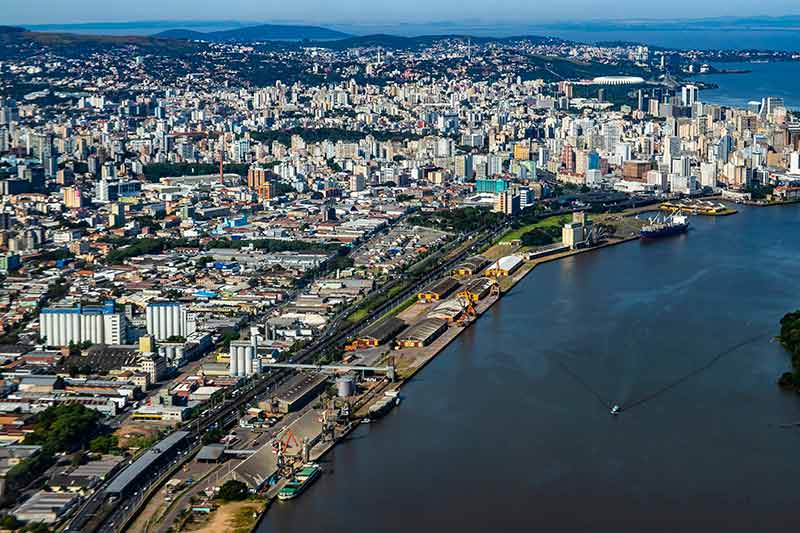
“Joyful Harbour” is the capital of Rio Grande do Sul and boasts a population of 1.5 million.
A further three million live within the greater metropolitan area.
Its origins date back to 1769, with settlement established on the east bank of Guaiba Lake, taking advantage of the fact that there was the potential to develop a port.
At one time, it had a worryingly high crime rate, but happily, that rate has fallen.
Travellers to Porto Alegre should head to the main square where the cathedral, Praca Marechal Deodoro, displays its Renaissance style.
Other landmarks are the Piratini Palace and the Sao Pedro Theatre, both 19th Century. Nature lovers will surely head to the Aparados da Serra National Park.
Top tour: Sailing in Guaíba with White Swan Boats.
For more incredible cities around the world, read:
- 20 Best Cities at Night
- 20 Best Cities in Mexico
- 20 Best Cities in Greece
- 20 Best Cities in Poland
- 20 Best Cities in Spain
- 20 Best Cities in Portugal
- 20 Best Cities in Ohio
- 20 Best Cities in Missouri
- 20 Best Cities in Indiana
- 20 Best Cities in Texas
- 20 Best Cities in Florida
- 20 Best Cities in Iowa
- 20 Best Cities in Illinois
- 20 Best Cities in Wyoming
- 20 Best Cities in Tennessee
- 20 Best Cities in Nevada
- 20 Best Cities in Alabama
- 20 Best Cities in Oklahoma
- 20 Best Cities in Idaho
- 20 Best Cities in New Mexico
- 20 Best Cities in Georgia
- 20 Best Cities in North Carolina
- 20 Best Cities in Vietnam
- 20 Best Danube River Cities
- 10 Best Party Cities in Canada
- 10 Best Cities in Canada For Kids
- 20 Best Cities in Hawaii
- 20 Best Cities in Romania
- 20 Best Cities in Finland
- 20 Best Cities in France
- 20 Best Cities in Taiwan
- 20 Best Cities in Turkey
- 20 Best Cities in Scotland
- 20 Best Cities in New York
- 20 Best Cities in England
- 20 Best Cities in Switzerland
- 20 Best Cities in New Zealand
- 20 Best Cities in Iceland
- 20 Best Cities in Netherlands
- 20 Best Cities in Belgium
- 20 Best Cities in Jordan
- 20 Best Cities in Italy
- 20 Best Cities in Ireland
- 20 Best Cities in Germany
- 20 Best Cities in Brazil
- 20 Best Cities in Armenia
Plan Your Trip

Rent A Car – Find the best car rental rates at Discover Cars. They compare car hire companies to provide you with the best deal right now.

Find A Hotel – If you’re curious about this article and are looking for somewhere to stay, take a look at these amazing hotels.

